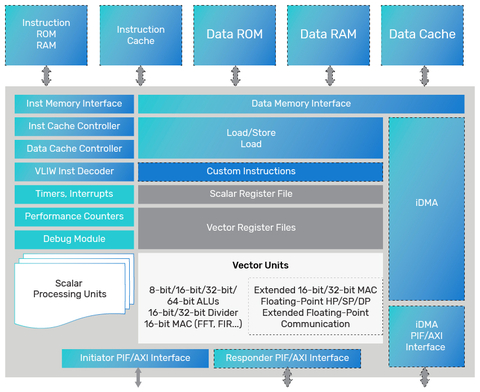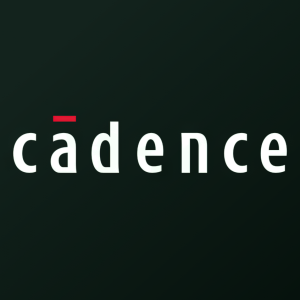Cadence Advances Radar, Lidar and Communications Processing for Automotive, Consumer and Industrial Markets
New Tensilica ConnX 110 and ConnX 120 DSPs Provide Optimal PPA and More Flexible Compute Options

The small, low-power Cadence® Tensilica® ConnX 110 and ConnX 120 DSPs offer customers greater flexibility for radar, lidar and communications processing in the automotive, consumer and industrial markets. (Graphic: Business Wire)
The 128-bit ConnX 110 DSP and 256-bit ConnX 120 DSP feature an N-way programming model and are fully compatible with the ConnX B10 and B20 DSPs, preserving software compatibility for easy migration. Like the rest of the Tensilica DSP portfolio, the ConnX 110 and ConnX 120 DSPs support the Tensilica Instruction Extension (TIE) language, which allows customers to tailor the instruction set, add specialized data types, and implement tightly integrated interfaces between the DSP and external logic. In addition, the new DSPs are supported by a comprehensive set of complex math library functions in the NatureDSP, Eigen and Radar libraries. All ConnX DSPs are automotive-ready with full ISO 26262 compliance to ASIL-D with FlexLock or to ASIL-B.
The Tensilica ConnX 110 and 120 DSPs offer the following features and capabilities:
- Optimized instruction set for radar, lidar and communications applications
- 128-bit (ConnX 110) and 256-bit (ConnX 120) SIMD performance for complex math operations based on 8-, 16- and 32-bit fixed-point and half-, standard- and double-precision floating-point
- Common instruction set and simplified programming model, allowing code to be written once and utilized across different SIMD widths within the ConnX family
- Architecture optimized for small memory footprint and low-power signal processing
- Optional acceleration operations for linear-feedback shift, convolutional encoding, single peak search and dual peak search
- The ConnX 120 additionally offers Viterbi and Turbo decoders
“NXP continues to rely on the Cadence Tensilica DSP cores for our ADAS product offerings,” said
“indie is committed to developing multiple sensor modalities to enable safer vehicles in the pursuit of the uncrashable car,” said
“Radar and communications processing trends require solutions that perform more processing in less time,” said
About Cadence
Cadence is a pivotal leader in electronic design, building upon more than 30 years of computational software expertise. The company applies its underlying Intelligent System Design strategy to deliver software, hardware and IP that turn design concepts into reality. Cadence customers are the world’s most innovative companies, delivering extraordinary electronic products from chips to boards to systems for the most dynamic market applications, including consumer, hyperscale computing, 5G communications, automotive, mobile, aerospace, industrial and healthcare. For eight years in a row,
© 2022
Category: Featured
View source version on businesswire.com: https://www.businesswire.com/news/home/20220630005219/en/
Cadence Newsroom
408-944-7039
newsroom@cadence.com
Source:







